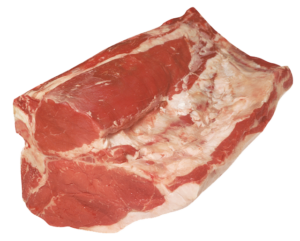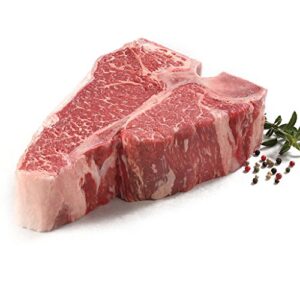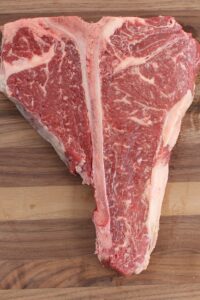A Guide to the Cuts of Beef Part Five

The Purpose of the Post:
In my last blog post, ‘A Guide to the Cuts of Beef Part Four,’ I highlighted the complexity and potential confusion surrounding cuts from the hindquarter. Before delving further, let’s take a moment to recap.
As discussed in ‘A Guide to the Cuts of Beef Part Four,’ the process of butchering the hindquarter involves careful precision. The butcher or meat processor follows two seams leading down to the Sirloin, ensuring not to compromise this valuable cut while removing the Round-Tip, also known as the Sirloin-Tip. Additionally, I covered the removal of Beef Suet in detail in the same post.
If you’d like to review the previous discussion on these topics, you can find it at https://fireinthekettle.com/a-guide-to-the-cuts-of-beef-part-four/. With that foundation in mind, let’s continue our exploration of the various cuts of meat originating from the hindquarter.
The Beef Sirloin:
The next step in the cutting process involves separating the Round from the Beef Sirloin. The butcher or meat processor will make a precise cut just below a ball joint that separates the Round and the Beef Sirloin. Initially, an eight-inch flexible boning knife is used to make this cut, followed by the use of a hand saw to complete the separation. It’s crucial to note that the Beef Sirloin is situated below the Round.
Before diving into the specifics of the Beef Sirloin, it’s important to understand the variety of cuts that originate from it. While the Beef Sirloin is indeed sourced from the hindquarter of the cow (steer), the specific cuts can vary depending on the approach taken by the butcher or meat processor. As a result, some cuts may not be attainable based on the cutting method employed.
The following cuts are undisputedly sourced from the Beef Sirloin:
- The Beef Sirloin (boneless or bone-In)
- The Short Sirloin
- The Tenderloin
- The Porterhouse
- The T-Bone
Here’s where the confusion arises when it comes to the Beef Sirloin. The butcher or meat processor has two options when processing the Beef Sirloin. The first option is to remove the Whole Tenderloin, yielding some Boneless Sirloins, Fillets, and Strips (also known as New York Strip Steaks). The second option is to leave the Tenderloin intact, along with the bone, resulting in bone-in Sirloins, Porterhouse steaks, and T-bones.
Once the Beef Sirloin has been separated from the Round, the butcher or meat processor will remove the Sirloin with the aid of a bandsaw, followed by the removal of any excess tail using the same tool. If the butcher or meat processor chooses to produce Porterhouse Steaks and T-Bone Steaks, they will begin by cutting the Porterhouse Steaks first with a bandsaw. It’s important to note that the bone remains part of the Beef Sirloin in this option. If this option is chosen, no Strip Steaks or Filet Mignons can be yielded from the Beef Sirloin.

The Porterhouse Steak:
Again, to emphasize, if the butcher or meat processor decides to yield Porterhouse Steaks from this portion of the hindquarter, they opt to leave the fillet and bone intact. Using a band saw, they then begin cutting the Porterhouse steaks. So let’s begin a discussion of the Porterhouse Steak.
The Porterhouse Steak is renowned for its impressive size and remarkable flavor. It’s essentially a combination of two prime cuts: the tender Filet Mignon and the meaty New York Strip. The distinguishing feature of the Porterhouse is the T-shaped bone that runs through the middle, separating the two sections. This bone adds both visual appeal and flavor to the steak, as it imparts richness and juiciness during cooking.
Due to its unique composition, the Porterhouse is often considered the undisputed King of steaks by many steak enthusiasts. It offers the best of both worlds: the buttery tenderness of the Filet Mignon and the robust flavor of the New York Strip. When properly cooked, the Porterhouse delivers a dining experience that is unparalleled in its succulence and satisfaction.

The T-Bone Steak:
Once the butcher or meat processor removes the Porterhouse steaks, some butchers or meat processors will spin the short loin in order to gain some T-Bone Steaks. The T-Bone Steak combines two highly desirable cuts of beef: the tender Filet Mignon and the flavorful New York Strip. Similar to the Porterhouse, the T-Bone Steak features a T-shaped bone running through the center, which separates the two cuts. However, compared to the Porterhouse, the T-Bone typically has a smaller portion of Filet Mignon, usually about 1/2 to 1 inch in diameter. This results in a steak that offers a balanced combination of tenderness and flavor, with the Filet Mignon side being more tender and the New York Strip side being more robust. Due to its impressive presentation and delicious flavor profile, the T-Bone Steak is a favorite choice among steak lovers and is often featured as a centerpiece in upscale steakhouses and home grilling events alike.

In Closing:
It is important to note that the Short Loin is a substantial cut of meat, varying in size depending on the size of the cow (steer). To illustrate this, consider the scenario where a butcher decides to remove three Porterhouse Steaks and then spin the Short Loin to obtain three T-bone Steaks. Despite these cuts, there will often be remaining portions of the Short Loin. In my next blog post, I will delve into the various cuts of beef that can be obtained from these remaining pieces. The processing of the Short Loin can be perplexing, as it largely depends on the decision of the butcher or meat processor.
My hope is that this blog post has provided clarity on the different cuts and processing methods employed by butchers and meat processors. It’s worth noting that all my blog posts are based on cuts derived from a Half-Side of a cow (steer), leaving the other half for further processing. This distinction is crucial because even if a butcher or meat processor chooses to cut all Porterhouse and T-bones from the Short Loin, they still have another Short Loin to process into Fillets and Strips.
Additionally, it’s important to acknowledge that terminology may vary among butchers and meat processors, depending on the region. The terms “Beef Sirloin” and “Short Loin” are often used interchangeably in colloquial language, but strictly speaking, they refer to different parts of the hindquarter.
As always, your feedback is invaluable. Please share your thoughts by clicking the ‘Click Here to Send Us Your Comments on This Post’ link below. Thank you for reading!
